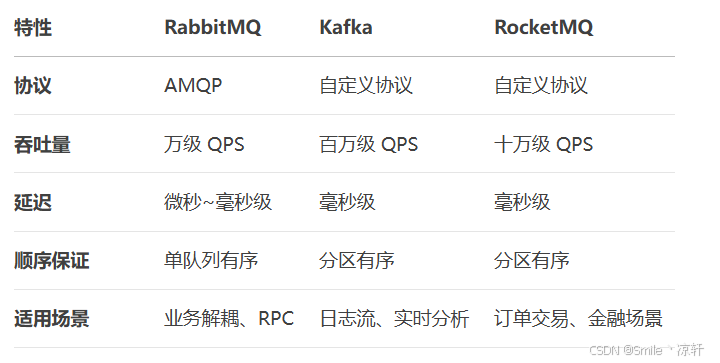Spring学习笔记1
目录
- 1 什么是spring
- 2 spring的优势
- 3 IOC的概念和作用
- 3.1 无参数构造函数的实例化方式
- 3.2 使用工厂中的普通方法实例化对象
- 4 Bean
- 4.1 Bean相关概念
- 4.2 Bean对象的作用范围
- 5 DI
- 5.1 构造函数注入
- 5.2 set方法注入
- 5.3 复杂类型数据注入
- 5.4 基于注解的IOC
- 5.4.1 包扫描
- 5.4.2 @Component
- 5.4.3 由Component衍生的注解
- 5.4.4 @Autowired
- 5.4.5 其他注入数据的注解
- 6 配置类
- 6.1. `@Configuration` 注解
- 6.2 `@Import` 注解
- 6.3 `@PropertySource` 注解
- 6.4 综合示例
1 什么是spring
Spring 是一个开源的 Java 应用框架,旨在简化企业级应用开发。它利用依赖注入(DI)和面向切面编程(AOP)减少代码耦合,提升可测试性和维护性。Spring 核心容器管理应用对象的生命周期和配置。
2 spring的优势
-
简化开发:通过依赖注入(DI)和面向切面编程(AOP),Spring 让代码更加模块化、解耦,减少了样板代码,提升了开发效率。
-
灵活性:Spring 提供了多种配置方式(注解、XML、JavaConfig),支持多种持久化框架和第三方库集成,适应不同的应用需求。
-
测试友好:依赖注入让单元测试和集成测试更加简便,无需依赖运行环境即可快速测试业务逻辑。
-
生态丰富:Spring 有强大的生态系统,包括 Spring Boot(简化配置和部署)、Spring Security(提供安全管理)、Spring Cloud(微服务支持)等,能够满足复杂的应用场景。
-
轻量级:Spring 的核心容器是小巧的,开发者可以选择性地使用需要的模块,避免不必要的依赖。
3 IOC的概念和作用
3.1 无参数构造函数的实例化方式
创建一个XML配置文件(例如 applicationContext.XML)
<bean id="userService" class="com.example.UserService"/>
使用Spring的ApplicationContext加载XML配置文件
// 加载 Spring XML 配置文件ApplicationContext context = new ClassPathXmlApplicationContext("applicationContext.xml");// 获取 BeanUserService userService = (UserService) context.getBean("userService");
3.2 使用工厂中的普通方法实例化对象
首先,创建一个工厂类,其中包含一个普通方法来创建 Bean 实例。
package com.example;public class UserFactory {public UserService createUserService() {return new UserService();}
}
在 Spring 的 XML 配置文件中,配置工厂 Bean 和使用工厂方法来创建 Bean。
<!-- 定义工厂 Bean --><bean id="userFactory" class="com.example.UserFactory"/><!-- 使用工厂方法来创建 Bean --><bean id="userService" factory-bean="userFactory" factory-method="createUserService"/>4 Bean
4.1 Bean相关概念
-
Bean: 在计算机英语中,有可重用组件(如持久层和业务层的接口和重用)的含义。
-
JavaBean: 其实JavaBean并不完全等于实体类,因为实体类只是可重用组件的一部分,也就是JavaBean的范围大于实体类的范围。
JavaBean的含义:用Java语言编写的可重用组件。
4.2 Bean对象的作用范围
bean标签的scope属性,
作用:用于指定bean的作用范围
取值:
-
singleton:单例的(默认值)
-
prototype:多例的
-
···等
5 DI
依赖注入:Dependency Injection
5.1 构造函数注入
bean标签内部的constructor-arg标签
标签中的属性:
- name:用于给构造函数中指定名称的参数赋值
- value:用于提供标准类型和String类型的数据
- ref:用于指定其他的bean类型数据(就是在ioc容器中出现过的bean对象)
需要提供一个含参数的构造器
public class Account{private Integer id;private String name;public Account(Integer id,String name){this.id = id;this.name = name;}
}
<bean id = "account" class = "com.example.Account"><constructor-arg name = "id" value = 10></constructor-arg><constructor-arg name = "name" value ="张三"></constructor-arg>
</bean>
5.2 set方法注入
bean标签内部的property标签
标签的属性:
- name:用于给构造函数中指定名称的参数赋值
- value:用于提供标准类型和String类型的数据
- ref:用于指定其他的bean类型数据(就是在ioc容器中出现过的bean对象)
需要提供set方法
public class Account{private Integer id;private String name;public void setId(Integer id){this.id = id;}public void setName(String name){this.name = name;}
}
<bean id="account" class="com.example.Account"><property name = "id" value = 10></property><property name = "name" value ="张三"></property>
</bean>
5.3 复杂类型数据注入
在 Spring 框架中,除了注入简单的类型(如 String、int 等),还可以注入复杂类型的数据,例如 List、Set、Map 和 Properties。这些复杂类型的数据可以通过 property 标签及其子标签来配置。
package com.example;
public class UserService {private List<String> emails;private Set<String> phoneNumbers;private Map<String, String> userRoles;private Properties props;public void setEmails(List<String> emails) {this.emails = emails;}public void setPhoneNumbers(Set<String> phoneNumbers) {this.phoneNumbers = phoneNumbers;}public void setUserRoles(Map<String, String> userRoles) {this.userRoles = userRoles;}public void setProps(Properties props) {this.props = props;}
}
<bean id="userService" class="com.example.UserService"><!-- 注入 List --><property name="emails"><list><value>john@example.com</value><value>jane@example.com</value></list></property><!-- 注入 Set --><property name="phoneNumbers"><set><value>+123456789</value><value>+987654321</value></set></property><!-- 注入 Map --><property name="userRoles"><map><entry key="john" value="admin"/><entry key="jane" value="user"/></map></property><!-- 注入 Properties --><property name="props"><props><prop key="language">English</prop><prop key="country">USA</prop></props></property></bean></beans>
5.4 基于注解的IOC
5.4.1 包扫描
使用注解时要告知spring在创建容器时要扫描的包
<context:component-scan base-package="com.example"></context:component-scan>
5.4.2 @Component
-
用法:定义在类名上
-
作用:用于把当前类对象存入spring容器中
-
属性:value:用于指定bean的id,默认值是类名(首字母小写)
5.4.3 由Component衍生的注解
- @Controller:一般用在表现层
- @Service:一般用在业务
- @Repository:一般用在持久层
这三个注解他们的作用和属性与@Component相同,他们三个是spring框架为我们提供明确的三层使用的注解。
5.4.4 @Autowired
@Autowired 是 Spring 框架中用于实现依赖注入(Dependency Injection, DI)的核心注解之一。它可以自动将 Spring 容器中匹配的 Bean 注入到需要的地方。@Autowired 可以用于构造函数、字段、setter 方法或任意方法。
@Autowired 的详细使用
- 字段注入
这是最常见的方式,直接在字段上使用 @Autowired 注解,Spring 会自动将匹配的 Bean 注入到该字段。
import org.springframework.beans.factory.annotation.Autowired;
import org.springframework.stereotype.Component;@Component
public class UserService {@Autowiredprivate UserRepository userRepository;public void displayUser() {userRepository.findUser();}
}
- 构造函数注入
在构造函数上使用 @Autowired 注解,Spring 会在实例化时通过构造函数注入依赖。
import org.springframework.beans.factory.annotation.Autowired;
import org.springframework.stereotype.Component;@Component
public class UserService {private final UserRepository userRepository;@Autowiredpublic UserService(UserRepository userRepository) {this.userRepository = userRepository;}public void displayUser() {userRepository.findUser();}
}
- Setter 方法注入
通过在 setter 方法上使用 @Autowired 注解,Spring 会在 Bean 创建后调用该方法完成注入。
import org.springframework.beans.factory.annotation.Autowired;
import org.springframework.stereotype.Component;@Component
public class UserService {private UserRepository userRepository;@Autowiredpublic void setUserRepository(UserRepository userRepository) {this.userRepository = userRepository;}public void displayUser() {userRepository.findUser();}
}
- 任意方法注入
除了构造函数和 setter 方法,@Autowired 还可以用在任意方法上。Spring 会在 Bean 创建后调用该方法完成注入。
import org.springframework.beans.factory.annotation.Autowired;
import org.springframework.stereotype.Component;@Component
public class UserService {private UserRepository userRepository;@Autowiredpublic void arbitraryMethod(UserRepository userRepository) {this.userRepository = userRepository;}public void displayUser() {userRepository.findUser();}
}
- 默认行为与
@Autowired的要求
- 默认行为:
@Autowired注解默认采用byType的方式进行注入。如果找到多个匹配的 Bean,Spring 会尝试根据@Qualifier注解进一步确定要注入的 Bean。 - 必填性:默认情况下,
@Autowired是必填的(required=true),即 Spring 必须找到一个匹配的 Bean,否则会抛出NoSuchBeanDefinitionException异常。 - 非必填性:可以通过设置
@Autowired(required = false)来使依赖成为可选的,这样如果找不到匹配的 Bean,Spring 将不会注入任何东西。
5.4.5 其他注入数据的注解
@Qualifier、@Resource 和 @Value 都是 Spring 框架中用于依赖注入(Dependency Injection, DI)的注解,但它们的用途和使用场景有所不同。
@Qualifier
@Qualifier 注解用于在多个相同类型的 Bean 中指定注入哪一个具体的 Bean。它通常与 @Autowired 一起使用。
使用场景
当有多个相同类型的 Bean 存在时,Spring 无法确定注入哪一个 Bean,这时可以使用 @Qualifier 注解来指定具体的 Bean。
示例
假设我们有两个实现 UserRepository 接口的 Bean:
import org.springframework.stereotype.Repository;@Repository("primaryUserRepository")
public class PrimaryUserRepository implements UserRepository {// 实现
}@Repository("secondaryUserRepository")
public class SecondaryUserRepository implements UserRepository {// 实现
}
在 UserService 中,我们可以使用 @Qualifier 注解来指定注入 secondaryUserRepository:
import org.springframework.beans.factory.annotation.Autowired;
import org.springframework.beans.factory.annotation.Qualifier;
import org.springframework.stereotype.Component;@Component
public class UserService {private final UserRepository userRepository;@Autowiredpublic UserService(@Qualifier("secondaryUserRepository") UserRepository userRepository) {this.userRepository = userRepository;}public void displayUser() {userRepository.findUser();}
}
@Resource
@Resource 注解是 Java 的标准注解(JSR-250),用于依赖注入。它可以根据名称或类型进行注入。默认情况下,@Resource 是按名称注入的,如果没有找到匹配的名称,则按类型注入。
使用场景
@Resource 注解通常用于按名称注入 Bean,如果不指定名称,则会使用默认的名称(即字段名)。
示例
假设我们有两个实现 UserRepository 接口的 Bean:
import org.springframework.stereotype.Repository;@Repository("primaryUserRepository")
public class PrimaryUserRepository implements UserRepository {// 实现
}@Repository("secondaryUserRepository")
public class SecondaryUserRepository implements UserRepository {// 实现
}
在 UserService 中,我们可以使用 @Resource 注解来指定注入 secondaryUserRepository:
import javax.annotation.Resource;
import org.springframework.stereotype.Component;@Component
public class UserService {@Resource(name = "secondaryUserRepository")private UserRepository userRepository;public void displayUser() {userRepository.findUser();}
}
@Value
@Value 注解用于注入配置文件中的值或直接注入字符串、数字等常量值。它通常用于注入简单的属性,例如字符串、数字、布尔值等。
使用场景
@Value 注解通常用于注入配置文件中的属性值,或者直接注入常量值。
示例
假设我们在 application.properties 文件中定义了一个属性:
app.name=MyApplication
在 UserService 中,我们可以使用 @Value 注解来注入这个属性值:
import org.springframework.beans.factory.annotation.Value;
import org.springframework.stereotype.Component;@Component
public class UserService {@Value("${app.name}")private String appName;public void displayAppName() {System.out.println("Application Name: " + appName);}
}
我们也可以直接注入常量值:
import org.springframework.beans.factory.annotation.Value;
import org.springframework.stereotype.Component;@Component
public class UserService {@Value("Hello, World!")private String greeting;public void displayGreeting() {System.out.println(greeting);}
}
4.@Scope
@Scope 是 Spring 框架中的一个注解,用于定义 Bean 的作用域。Bean 的作用域决定了 Bean 的生命周期以及 Spring 容器如何管理 Bean 的实例。通过 @Scope 注解,你可以指定 Bean 在应用中的生命周期和可访问范围。
常见的作用域
-
singleton(单例)
- 描述:这是 Spring 的默认作用域。在单例作用域中,每个 Spring IoC 容器仅创建一个 Bean 实例,并且所有对 Bean 的请求都会共用这一个实例。
- 适用场景:大多数无状态的 Bean 都适合使用单例作用域。
-
prototype(原型)
- 描述:每次请求都会创建一个新的 Bean 实例。
- 适用场景:当 Bean 是有状态的,即每个实例需要独立的状态时,应使用原型作用域。
-
request(请求)
- 描述:在 Web 应用中,每个 HTTP 请求都会创建一个 Bean 实例。该 Bean 只在当前 HTTP 请求内有效。
- 适用场景:需要在单个 HTTP 请求中维护状态的 Bean。
-
session(会话)
- 描述:在 Web 应用中,每个 HTTP Session 都会创建一个 Bean 实例。该 Bean 只在当前 HTTP Session 内有效。
- 适用场景:需要在用户 Session 范围内维护状态的 Bean。
-
application(应用)
- 描述:在 Web 应用中,每个 ServletContext(即整个应用)只有一个 Bean 实例。该 Bean 在整个应用范围内有效。
- 适用场景:需要在应用范围内共享数据的 Bean。
-
websocket(WebSocket)
- 描述:在 Web 应用中,每个 WebSocket 连接都会创建一个 Bean 实例。该 Bean 只在当前 WebSocket 连接内有效。
- 适用场景:需要在 WebSocket 连接范围内维护状态的 Bean。
使用 @Scope 注解
你可以使用 @Scope 注解来显式地指定 Bean 的作用域。以下是一些示例:
Singleton Scope
import org.springframework.context.annotation.Scope;
import org.springframework.stereotype.Component;@Component
@Scope("singleton")
public class SingletonBean {// Bean implementation
}
6 配置类
好的,@Configuration、@Import 和 @PropertySource 是 Spring 框架中常用的注解,分别用于配置类、模块化配置和外部属性文件的加载。下面分别介绍这三个注解的用途和使用方法。
6.1. @Configuration 注解
@Configuration 注解用于标记一个类为 Spring 配置类。配置类中可以定义 @Bean 注解的方法,用于创建和配置 Spring 容器中的 Bean。配置类可以替代传统的 XML 配置文件。
特点
- 替代 XML 配置:使用 Java 代码代替 XML 文件进行配置。
- 集中管理 Bean:在一个类中定义多个 Bean,方便管理。
- 支持依赖注入:可以在配置类中注入其他 Bean。
示例
import org.springframework.context.annotation.Bean;
import org.springframework.context.annotation.Configuration;@Configuration
public class AppConfig {@Beanpublic MyBean myBean() {return new MyBean();}
}
6.2 @Import 注解
@Import 注解用于将一个或多个配置类导入到当前配置类中。通过 @Import,可以实现模块化配置,将多个配置类组合在一起。
特点
- 模块化配置:将多个配置类组合在一起,便于管理和维护。
- 代码复用:可以在多个配置类中导入相同的配置类,避免重复代码。
示例
import org.springframework.context.annotation.Configuration;
import org.springframework.context.annotation.Import;@Configuration
@Import({DatabaseConfig.class, ServiceConfig.class})
public class AppConfig {// 其他 Bean 定义
}
6.3 @PropertySource 注解
@PropertySource 注解用于加载外部属性文件(如 .properties 或 .yml 文件),并将其中的属性值注入到 Spring 环境中。通常与 @Value 或 @ConfigurationProperties 注解一起使用。
特点
- 加载外部属性文件:支持加载
.properties或.yml文件。 - 动态配置:可以通过属性文件动态配置应用的行为。
- 支持多文件:可以加载多个属性文件。
示例
属性文件 app.properties
app.name=MyApp
app.version=1.0
配置类
import org.springframework.beans.factory.annotation.Value;
import org.springframework.context.annotation.Configuration;
import org.springframework.context.annotation.PropertySource;@Configuration
@PropertySource("classpath:app.properties")
public class AppConfig {@Value("${app.name}")private String appName;@Value("${app.version}")private String appVersion;public void printAppInfo() {System.out.println("App Name: " + appName);System.out.println("App Version: " + appVersion);}
}
6.4 综合示例
以下是一个综合使用 @Configuration、@Import 和 @PropertySource 的示例:
- 属性文件
database.properties
db.url=jdbc:mysql://localhost:3306/mydb
db.username=root
db.password=secret
- 配置类
DatabaseConfig
import org.springframework.beans.factory.annotation.Value;
import org.springframework.context.annotation.Bean;
import org.springframework.context.annotation.Configuration;
import org.springframework.context.annotation.PropertySource;@Configuration
@PropertySource("classpath:database.properties")
public class DatabaseConfig {@Value("${db.url}")private String dbUrl;@Value("${db.username}")private String dbUsername;@Value("${db.password}")private String dbPassword;@Beanpublic DataSource dataSource() {// 使用属性值创建数据源return new DataSource(dbUrl, dbUsername, dbPassword);}
}
- 配置类
ServiceConfig
import org.springframework.context.annotation.Bean;
import org.springframework.context.annotation.Configuration;@Configuration
public class ServiceConfig {@Beanpublic MyService myService() {return new MyService();}
}
- 主配置类
AppConfig
import org.springframework.context.annotation.Configuration;
import org.springframework.context.annotation.Import;@Configuration
@Import({DatabaseConfig.class, ServiceConfig.class})
public class AppConfig {// 其他 Bean 定义
}
相关文章:

Spring学习笔记1
目录 1 什么是spring2 spring的优势3 IOC的概念和作用3.1 无参数构造函数的实例化方式3.2 使用工厂中的普通方法实例化对象 4 Bean4.1 Bean相关概念4.2 Bean对象的作用范围 5 DI5.1 构造函数注入5.2 set方法注入5.3 复杂类型数据注入5.4 基于注解的IOC5.4.1 包扫描5.4.2 Compon…...

LeetCode 2185. Counting Words With a Given Prefix
🔗 https://leetcode.com/problems/counting-words-with-a-given-prefix 题目 给一个字符串数组,返回其中前缀为 pref 的个数 思路 模拟 代码 class Solution { public:int prefixCount(vector<string>& words, string pref) {int count…...

图漾相机基础操作
1.客户端概述 1.1 简介 PercipioViewer是图漾基于Percipio Camport SDK开发的一款看图软件,可实时预览相机输出的深度图、彩色图、IR红外图和点云图,并保存对应数据,还支持查看设备基础信息,在线修改gain、曝光等各种调节相机成像的参数功能…...

前端开发中页面优化的方法
前端页面优化是指通过改进网页的加载速度、提高用户体验和SEO优化等手段来优化页面性能的过程。以下是一些常见的前端页面优化方法: 压缩和合并文件:通过压缩CSS和JavaScript文件,并将多个文件合并成一个文件,减少网络传输和HTTP请…...

Qt QDockWidget详解以及例程
Qt QDockWidget详解以及例程 引言一、基本用法二、深入了解2.1 窗口功能相关2.2 停靠区域限制2.3 在主窗体布局 引言 QDockWidget类提供了一个可以停靠在QMainWindow内的小窗口 (理论上可以在QMainWindow中任意排列),也可以作为QMainWindow上的顶级窗口浮动 (类似一…...

机器学习之贝叶斯分类器和混淆矩阵可视化
贝叶斯分类器 目录 贝叶斯分类器1 贝叶斯分类器1.1 概念1.2算法理解1.3 算法导入1.4 函数 2 混淆矩阵可视化2.1 概念2.2 理解2.3 函数导入2.4 函数及参数2.5 绘制函数 3 实际预测3.1 数据及理解3.2 代码测试 1 贝叶斯分类器 1.1 概念 贝叶斯分类器是基于贝叶斯定理构建的分类…...

关于大数据的基础知识(一)——定义特征结构要素
成长路上不孤单😊😊😊😊😊😊 【14后😊///计算机爱好者😊///持续分享所学😊///如有需要欢迎收藏转发///😊】 今日分享关于大数据的基础知识(一&a…...

2025 GitCode 开发者冬日嘉年华:AI 与开源的深度交融之旅
在科技的浪潮中,AI 技术与开源探索的火花不断碰撞,催生出无限可能。2025 年 1 月 4 日,由 GitCode 联合 CSDN COC 城市开发者社区精心打造的开年首场开发者活动:冬日嘉年华在北京中关村 • 鼎好 DH3-A 座 22 层盛大举行࿰…...

【MyBatis-Plus 进阶功能】开发中常用场景剖析
MyBatis-Plus(MP)除了封装常见的 CRUD 操作,还提供了一些高级功能,进一步简化复杂场景下的开发工作。本文将逐一讲解 逻辑删除、自动填充、多表关联查询的原理与使用方式,让你快速掌握这些技巧! 一、逻辑删…...

【C++/控制台】2048小游戏
源代码: #include <iostream> #include <windows.h> #include <stdio.h> #include <math.h> #include <stdlib.h> #include <conio.h> #include <time.h>// #define KEY_DOWN(VK_NONAME) ((GetAsyncKeyState(VK_NONAME)…...

Linux 中 top 命令的使用与实例解读
目录 Linux 中 top 命令的使用与实例解读一、top 命令参数二、输出字段含义(一)系统信息(二)任务信息(三)CPU 信息(四)内存信息 三、实例解读系统信息任务信息CPU信息内存信息进程列…...

C++ STL 中的 `unordered_map` 和 `unordered_set` 总结
1. unordered_map unordered_map 是一个基于哈希表实现的容器,存储键值对(key-value),每个键必须唯一,可以快速插入、删除、查找。 基本特性 存储结构:键值对 (key-value)。键唯一性:每个键在…...

机器学习基础-概率图模型
(一阶)马尔科夫模型的基本概念 状态、状态转换概率、初始概率 状态转移矩阵的基本概念 隐马尔可夫模型(HMM)的基本概念 条件随机场(CRF)的基本概念 实际应用中的马尔科夫性 自然语言处理: 在词性…...

【MySQL】九、表的内外连接
文章目录 前言Ⅰ. 内连接案例:显示SMITH的名字和部门名称 Ⅱ. 外连接1、左外连接案例:查询所有学生的成绩,如果这个学生没有成绩,也要将学生的个人信息显示出来 2、右外连接案例:对stu表和exam表联合查询,把…...

芯片详细讲解,从而区分CPU、MPU、DSP、GPU、FPGA、MCU、SOC、ECU
目录 芯片的概念结构 芯片的派系划分 通用芯片(CPU,MPU,GPU,DSP) 定制芯片(FPGA,ASIC) 芯片之上的集成(MCU,SOC,ECU) 软硬件的匹…...
locate_cylinder_3d)
halcon三维点云数据处理(十)locate_cylinder_3d
目录 一、locate_cylinder_3d例程代码二、gen_binocular_rectification_map函数三、binocular_disparity函数四、自定义函数select_best_candidates五、自定义函数remove_shadowed_regions 一、locate_cylinder_3d例程代码 1、读取或者创建3D形状模型, 2、根据双目…...
, react (16及以上)开发者工具资源)
vue(2,3), react (16及以上)开发者工具资源
在前端开发的广阔领域中,Vue.js 和 React.js 作为两大主流框架,各自拥有庞大的用户群体和丰富的生态系统。为了帮助开发者更高效地进行调试和开发,Vue Devtools 和 React 开发者工具应运而生,成为这两个框架不可或缺的辅助工具。本…...

2025年华为OD上机考试真题(Java)——整数对最小和
题目: 给定两个整数数组array1、array2,数组元素按升序排列。假设从array1、array2中分别取出一个元素可构成一对元素,现在需要取出k对元素,并对取出的所有元素求和,计算和的最小值。 注意:两对元素如果对应…...

进程间通信——网络通信——UDP
进程间通信(分类):网络通信、无名管道、有名管道、信号、消息队列、共享内存、信号量集 OSI七层模型:(理论模型) 应用层 : 要传输的数据信息,如文件传输,电子邮件等 表示层 : 数…...

【我的 PWN 学习手札】IO_FILE 之 FSOP
FSOP:File Stream Oriented Programming 通过劫持 _IO_list_all 指向伪造的 _IO_FILE_plus,进而调用fake IO_FILE 结构体对象中被伪造的vtable指向的恶意函数。 目录 前言 一、glibc-exit函数浅析 二、FSOP 三、Largebin attack FSOP (…...

使用docker在3台服务器上搭建基于redis 6.x的一主两从三台均是哨兵模式
一、环境及版本说明 如果服务器已经安装了docker,则忽略此步骤,如果没有安装,则可以按照一下方式安装: 1. 在线安装(有互联网环境): 请看我这篇文章 传送阵>> 点我查看 2. 离线安装(内网环境):请看我这篇文章 传送阵>> 点我查看 说明:假设每台服务器已…...

<6>-MySQL表的增删查改
目录 一,create(创建表) 二,retrieve(查询表) 1,select列 2,where条件 三,update(更新表) 四,delete(删除表…...

【python异步多线程】异步多线程爬虫代码示例
claude生成的python多线程、异步代码示例,模拟20个网页的爬取,每个网页假设要0.5-2秒完成。 代码 Python多线程爬虫教程 核心概念 多线程:允许程序同时执行多个任务,提高IO密集型任务(如网络请求)的效率…...

【学习笔记】深入理解Java虚拟机学习笔记——第4章 虚拟机性能监控,故障处理工具
第2章 虚拟机性能监控,故障处理工具 4.1 概述 略 4.2 基础故障处理工具 4.2.1 jps:虚拟机进程状况工具 命令:jps [options] [hostid] 功能:本地虚拟机进程显示进程ID(与ps相同),可同时显示主类&#x…...

Rapidio门铃消息FIFO溢出机制
关于RapidIO门铃消息FIFO的溢出机制及其与中断抖动的关系,以下是深入解析: 门铃FIFO溢出的本质 在RapidIO系统中,门铃消息FIFO是硬件控制器内部的缓冲区,用于临时存储接收到的门铃消息(Doorbell Message)。…...

技术栈RabbitMq的介绍和使用
目录 1. 什么是消息队列?2. 消息队列的优点3. RabbitMQ 消息队列概述4. RabbitMQ 安装5. Exchange 四种类型5.1 direct 精准匹配5.2 fanout 广播5.3 topic 正则匹配 6. RabbitMQ 队列模式6.1 简单队列模式6.2 工作队列模式6.3 发布/订阅模式6.4 路由模式6.5 主题模式…...

AI病理诊断七剑下天山,医疗未来触手可及
一、病理诊断困局:刀尖上的医学艺术 1.1 金标准背后的隐痛 病理诊断被誉为"诊断的诊断",医生需通过显微镜观察组织切片,在细胞迷宫中捕捉癌变信号。某省病理质控报告显示,基层医院误诊率达12%-15%,专家会诊…...

虚拟电厂发展三大趋势:市场化、技术主导、车网互联
市场化:从政策驱动到多元盈利 政策全面赋能 2025年4月,国家发改委、能源局发布《关于加快推进虚拟电厂发展的指导意见》,首次明确虚拟电厂为“独立市场主体”,提出硬性目标:2027年全国调节能力≥2000万千瓦࿰…...

iview框架主题色的应用
1.下载 less要使用3.0.0以下的版本 npm install less2.7.3 npm install less-loader4.0.52./src/config/theme.js文件 module.exports {yellow: {theme-color: #FDCE04},blue: {theme-color: #547CE7} }在sass中使用theme配置的颜色主题,无需引入,直接可…...

Modbus RTU与Modbus TCP详解指南
目录 1. Modbus协议基础 1.1 什么是Modbus? 1.2 Modbus协议历史 1.3 Modbus协议族 1.4 Modbus通信模型 🎭 主从架构 🔄 请求响应模式 2. Modbus RTU详解 2.1 RTU是什么? 2.2 RTU物理层 🔌 连接方式 ⚡ 通信参数 2.3 RTU数据帧格式 📦 帧结构详解 🔍…...
